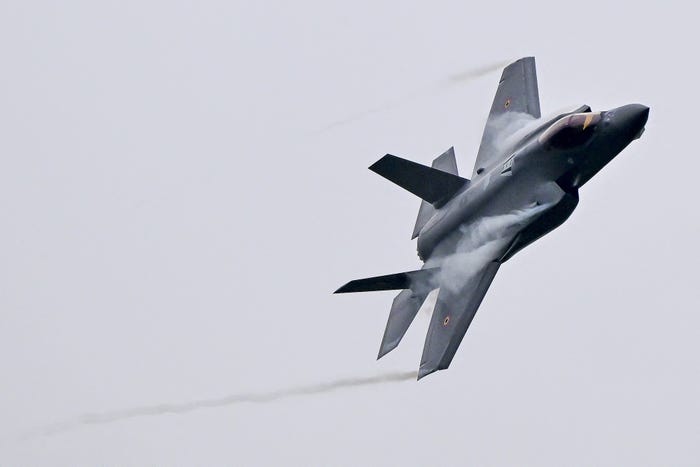New Radar Tech Makes Low-Flying Jets Vulnerable, RAF Warns

URGENT UPDATE: New radar and missile technologies have transformed the battlefield, putting even low-flying jets at unprecedented risk, according to a top Royal Air Force official. Air Vice-Marshal James Beck warned that the long-held belief that flying close to the ground would evade detection is now obsolete, with implications for future air combat.
Speaking at the Royal United Services Institute on Monday, Beck emphasized that advancements in radar systems have resulted in a “flattening of the earth.” He pointed out that while pilots once relied on terrain-masking tactics to avoid enemy detection, new technologies render these strategies ineffective.
The Ukraine War illustrates the critical need for air superiority as both sides struggle to dominate the skies amidst sophisticated air defense systems. Beck stated, “The longer the conflict reigns, this lesson becomes ever more compelling.” Neither Ukraine nor Russia has achieved air dominance, demonstrating the challenges posed by enhanced air defenses.
Beck highlighted the rise of Active Electronically Scanned Array (AESA) radar technology, which enables military aircraft to track multiple targets simultaneously. The range of detection has expanded dramatically, moving from hundreds to thousands of nautical miles. This change drastically increases the threat level for air operations.
Moreover, advancements in Over-the-Horizon (OTH) radar systems can now detect aircraft beyond the curvature of the earth. Beck warned that these capabilities are making it increasingly difficult for air forces to penetrate enemy territories, as anti-access and area-denial strategies become more sophisticated. These restricted zones could expand significantly, potentially being measured in continents within the next decade.
The implications are dire: air forces will face mounting challenges in gaining air superiority, which remains crucial for targeting command centers and logistics hubs behind enemy lines. As the conflict in Ukraine continues to evolve, Beck stressed that control of the air is paramount for success.
In response to these developments, Beck outlined the UK’s strategy to enhance its command and control capabilities. The RAF plans to leverage advancements in sensor technology to extend detection ranges and improve layered defenses against air threats. He emphasized the urgent need for a new generation of aircraft, particularly sixth-generation fighters, to ensure effectiveness in modern warfare.
Currently, the fifth-generation F-35 Lightning II is considered the baseline for air superiority. However, Beck noted that without advanced stealth features, future aircraft will struggle to operate effectively within enemy air defense systems. “Control of the air is the thing that we must master above all else,” he asserted.
As nations adapt to these technological advancements, the stakes are higher than ever. The evolving landscape of aerial combat will require innovative strategies and capabilities to ensure that air forces can operate effectively against increasingly sophisticated threats.
Stay tuned for further updates as this situation develops, as the implications for global military operations are profound and far-reaching.






